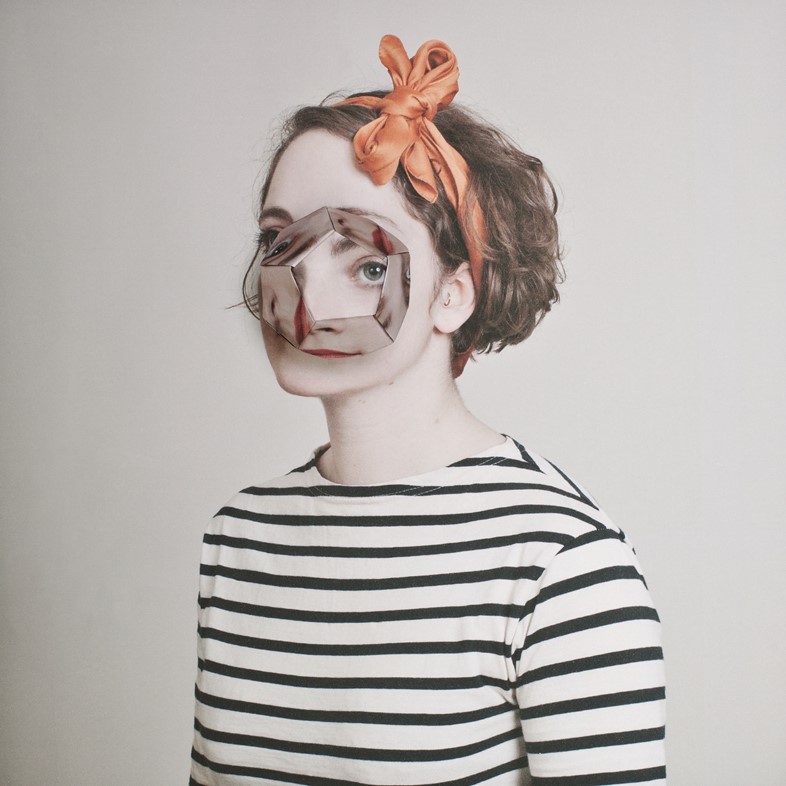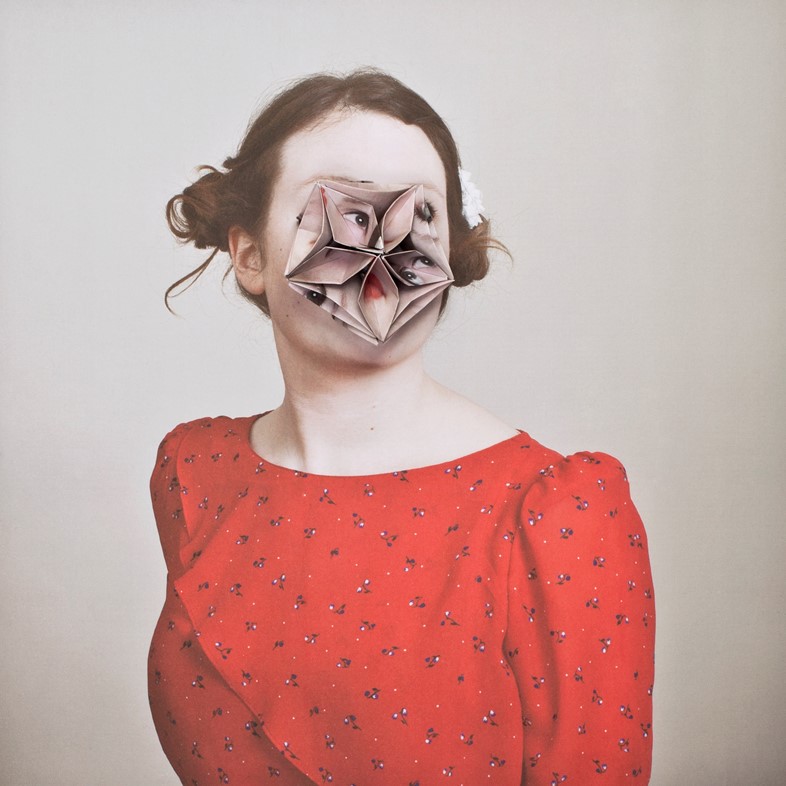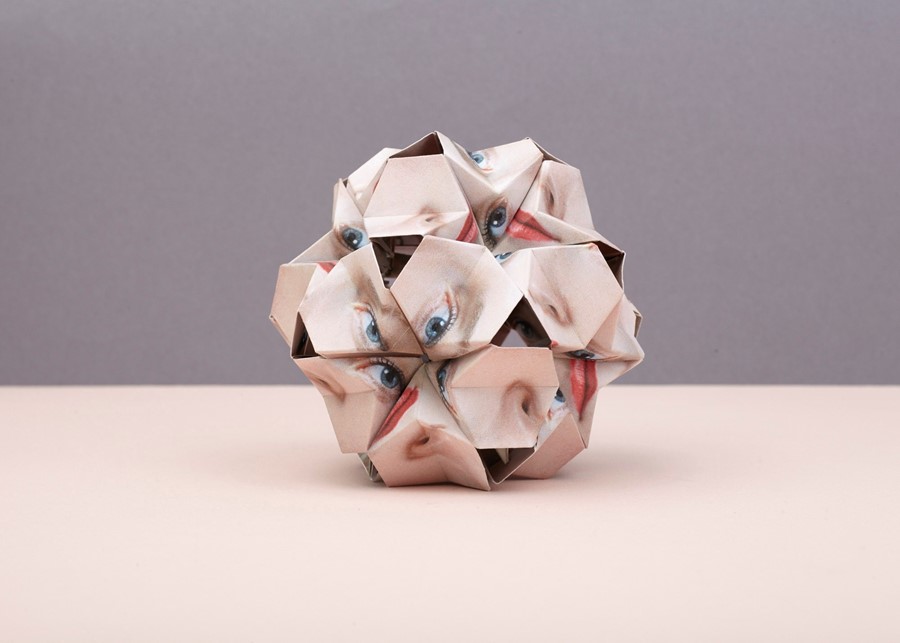"I love the act of physically making something, of stepping out of this digital world," says the German-born creative, whose curious works take centre stage at The Photographers' Gallery this summer
Alma Haser’s Cosmic Surgery series – currently on display at London’s Photographers’ Gallery – is a project she describes as a ‘happy accident’, right down to its title. “I’m really dyslexic, so I always mix words up,” the German-born, British-based artist-photographer explains. “Whenever I’d talk about cosmetic surgery, I’d refer to it as cosmic surgery and it kind of stuck. When I started this project it made sense to call it that.”
Haser’s portraits of anonymous sitters, their faces obscured by lattices of their own image, are an intriguing albeit unsettling sight. Her process involves printing multiple copies of portraits she has taken and folding them into origami structures. These are then placed onto a copy of the original portrait, before she photographs the assemblage in situ. It’s an indelible working style that has seen the 27-year-old carve out a niche for herself in a digital world saturated with imagery. Consequently, her work has been shortlisted for the Taylor Wessing Portrait Prize and exhibited internationally. Below, she discusses the evolution of her unique artistic practice.

On her bohemian childhood...
I was born in the Black Forest; Germany where my parents lived in a converted matchstick factory, before moving to Somerset with my mother aged six. My dad is a painter and sculptor and my mum is a mixed media artist. In 2002, when I was 13 she took my younger brother and I travelling to Singapore, Bali, Tahiti, the Cook Islands and New Zealand for a year. It was my mum – around this time – who really got me interested in photography. She made a pinhole camera and used it to take photos of us on a desert island somewhere, and then I’d watch her develop the pictures. I loved seeing the whole process.
On the importance of artistic integrity...
After studying photography at Nottingham Trent University I knew I wanted to get into the profession, but I avoided assisting other photographers because I didn’t want to be influenced by their style. I wanted to be my own person, and make my own work.
Now, in many ways, photography is the least important aspect of what I do; it’s more about how I modify the photograph, and turn it into something else. I’m currently working on a series for Spiegel magazine, which involves working into the pixels of portrait I have taken by weaving them, cutting out some of the pixels and so on. I love the act of physically making something, of stepping out of this digital world. Taking a photo and then editing it on Photoshop is my idea of hell. If I were to offer any advice to an aspiring photographer, it would be to always make what you truly want to make – not what you think someone else will want to buy.

On Cosmic – or should that be Cosmetic – Surgery?
When I started this project I wanted to find a way of [visually] describing the face of the person in the portrait. I originally made paper masks and tested them on my face, but that didn’t work so I started experimenting with kusudama balls [origami flowers], but in more geometric shapes – I’ve always been fascinated by Japanese culture. The idea behind the work is to show the stage when a person, who is about to have cosmetic surgery, is formulating the vision of the face they want to have. Last year the project evolved when I published the second edition of the Cosmic Surgery book, which I made as a pop-up book, to emphasise the three-dimensional aspect of my work. I did it in collaboration with my stepfather, the science writer Piers Bizony who wrote a promotional catalogue of the cosmetic surgery you could have in the future.
On the symbiosis of film and photography...
Although we were encouraged to research the work of other photographers at university, I’ve always been more inspired by film. I like subtle films that are slow burners and are really visually beautiful. Korean cinema does this well; one of my favourites is 3-Iron, it’s pretty much a silent movie – the main character hardly speaks.
I also love the Swedish director Roy Andersson’s films. Every scene is done in a single shot from a fixed camera position, so everything is moving through the frame, creating a story in one setting. It’s such a great way of combining film and photography; his work has really made me want to try working in film one day.

Alma Haser: Cosmic Surgery is on view at The Photographers' Gallery in London until August 14, 2016.
